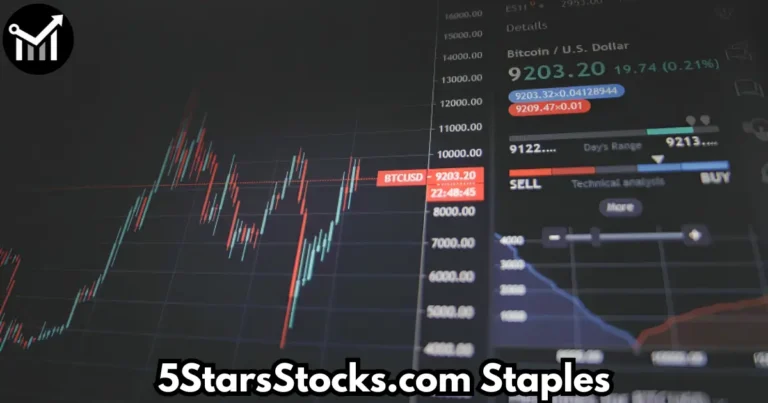Investing in the stock market has always carried a mix of risk and reward. But for some investors, standard ETFs and blue-chip stocks don’t offer enough excitement or upside potential. Enter leveraged ETFs like GUSH, which aim to amplify returns—and, of course, risks. If you have a high risk tolerance and are fascinated by the energy sector’s ups and downs, GUSH Stock might have caught your eye.
GUSH, officially known as the Direxion Daily S&P Oil & Gas Exp. & Prod. Bull 2X Shares, is not your average ETF. It offers twice the daily return of the S&P Oil & Gas Exploration & Production Select Industry Index. That means when the underlying index goes up by 1%, GUSH aims to go up by 2%. However, the reverse is also true, making it a high-stakes investment vehicle for active traders and sophisticated investors.
In this article, we will explore GUSH stock in-depth—what it is, how it works, its performance history, risks and benefits, and whether it deserves a place in your investment portfolio. Whether you’re an experienced trader or a curious observer, this guide will provide valuable insights into this high-octane ETF.
What Is GUSH Stock?
GUSH is a leveraged ETF managed by Direxion, designed to offer 2x daily exposure to an index of U.S.-based oil and gas exploration and production companies. It’s important to understand that GUSH is a short-term trading tool, not a buy-and-hold investment.
Key Features of GUSH
- Leverage: 2x daily returns of the underlying index.
- Sector Focus: U.S. oil and gas exploration and production.
- Management: Operated by Direxion, a leading provider of leveraged ETFs.
- Expense Ratio: Around 1.02%, higher than traditional ETFs due to the complexity of managing leverage.
How Does GUSH Work?
GUSH uses financial derivatives like swaps, futures contracts, and options to achieve its 2x leverage. It’s rebalanced daily to maintain this exposure, meaning compounding effects can significantly impact returns over time—both positively and negatively.
GUSH vs. Traditional Energy ETFs
While traditional energy ETFs like XLE or VDE aim to track the performance of the energy sector, GUSH seeks to double the daily returns. This makes it suitable for:
- Day traders
- Momentum investors
- Sophisticated investors who actively monitor their portfolios
It is not recommended for long-term passive investors due to the risk of volatility decay.
Historical Performance of GUSH
Like most leveraged ETFs, GUSH experiences dramatic price swings. It soared during periods of rising oil prices but also plummeted during downturns, particularly in times of macroeconomic uncertainty.
Performance Highlights
- In early 2022, GUSH surged over 100% as oil prices spiked due to geopolitical tensions and supply constraints.
- During the COVID-19 crash in 2020, GUSH lost over 90% of its value.
Why Performance Is So Volatile
- Leverage Rebalancing: Daily resets can create a compounding effect.
- Market Volatility: Oil prices are influenced by global politics, supply/demand imbalances, and natural disasters.
- Company Performance: The index includes smaller, more volatile companies compared to oil giants.
Benefits of Investing in GUSH
Despite the risks, GUSH offers potential advantages for the right type of investor.
1. Amplified Returns
If you can accurately predict short-term movements in oil prices, GUSH provides an opportunity to double your returns.
2. Tactical Trading Tool
Active traders can use GUSH for short-term bets on oil sector momentum or news-driven price action.
3. Diversified Exposure to Energy Sector
Even though it’s leveraged, GUSH still offers exposure to a basket of companies, reducing single-stock risk.
Risks of Investing in GUSH
For every advantage, GUSH carries significant risks that can’t be overlooked.
1. Volatility Decay
Due to the daily reset of leverage, GUSH may underperform over the long term, even if the underlying index rises.
2. High Expense Ratio
The 1.02% fee is higher than most ETFs, which can eat into returns.
3. Market Timing Required
Success with GUSH requires accurate timing and market awareness. Holding during a downturn can result in significant losses.
4. Regulatory Risks
The energy sector is highly regulated, and changes in environmental laws or government policies can impact performance.
5. Liquidity Concerns
Although generally liquid, rapid market changes can create slippage or widen bid/ask spreads.
Who Should Consider GUSH?
GUSH is not for everyone. It’s most appropriate for:
- Traders who understand leveraged ETFs and the energy sector.
- Investors with high risk tolerance and a short-term outlook.
- Those looking to hedge other energy positions.
Not Recommended For
- Long-term, buy-and-hold investors
- Risk-averse individuals
- Those new to trading or without a solid strategy
Expert Opinions on GUSH
Financial experts often caution against holding leveraged ETFs like GUSH for extended periods.
Comments from Analysts
- “Leveraged ETFs are great for tactical strategies, but you need to understand the mechanics.” — Todd Rosenbluth, Head of ETF Research at VettaFi
- “GUSH can deliver outsized returns, but also extreme losses. It’s not a game for beginners.” — Kathy Jones, Chief Fixed Income Strategist, Schwab Center for Financial Research
Tips for Trading GUSH
If you decide to trade GUSH, consider these tips:
- Use Stop-Loss Orders: Protect yourself from unexpected downturns.
- Set Clear Goals: Know your exit strategy before entering a position.
- Stay Informed: Monitor oil prices, OPEC decisions, and geopolitical events.
- Limit Exposure: Don’t allocate more than a small portion of your portfolio.
GUSH and Oil Market Trends
GUSH’s performance is tightly linked to the oil market. Here are some factors that influence its trajectory:
1. OPEC Decisions
Production cuts or increases by OPEC can cause major price movements.
2. Global Demand
Increased demand from developing nations can boost oil prices.
3. Geopolitical Tensions
Conflicts in oil-rich regions often lead to supply fears and price spikes.
4. U.S. Energy Policies
Regulatory changes, tax policies, and subsidies can impact exploration and production companies.
Alternatives to GUSH
If GUSH feels too risky, consider these alternatives:
- XLE (Energy Select Sector SPDR): Offers broad exposure to large-cap energy stocks.
- VDE (Vanguard Energy ETF): Low-cost, diversified energy sector ETF.
- OIH (VanEck Oil Services ETF): Focuses on oilfield services rather than exploration and production.
FAQs
Is GUSH a good long-term investment?
No. GUSH is designed for short-term trading and not suitable for long-term holding due to volatility decay and daily rebalancing.
What type of investors should use GUSH?
GUSH is best for experienced traders with a high risk tolerance who actively monitor the energy sector.
Can GUSH go to zero?
Yes, like any ETF with extreme leverage and sector-specific exposure, GUSH can potentially go to zero during extreme market conditions.
How does GUSH track oil prices?
GUSH aims to deliver 2x the daily return of an index of oil and gas exploration companies, which are closely correlated with oil prices.
What are the tax implications of trading GUSH?
Because GUSH is an ETF that may involve frequent trading, short-term capital gains tax rates could apply. Consult a tax advisor for specific guidance.
Read More: Oil Exploration Stocks: Top Picks & Trends for 2025
Conclusion
GUSH is a powerful financial instrument designed for short-term, high-risk trades in the energy sector. With its 2x leverage, it can yield substantial gains during bullish oil markets but can also lead to rapid losses if markets turn against you. Understanding its mechanics, risks, and the macroeconomic environment is essential before jumping in.
For investors who thrive on volatility and have the expertise to navigate market movements, GUSH Stock may offer exciting opportunities. But for most, it’s a speculative play best approached with caution, discipline, and a clear trading strategy.




